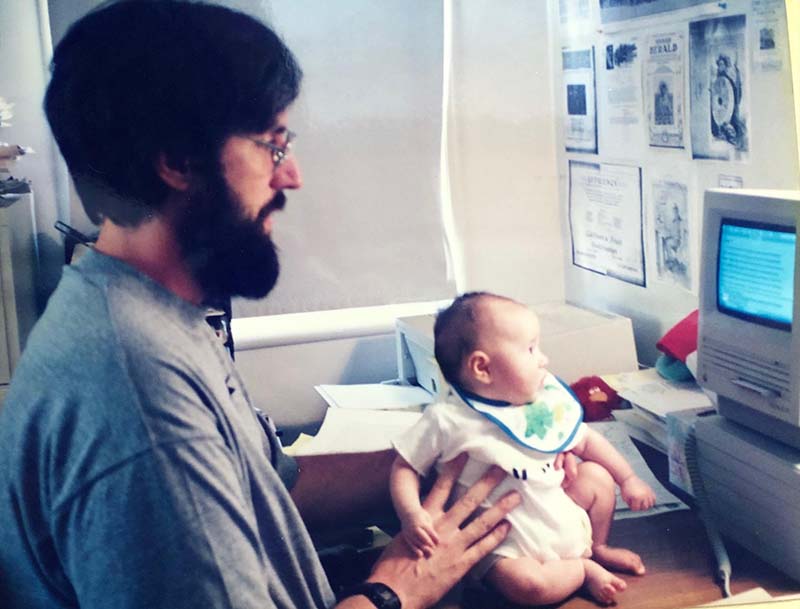History Peeps: David Vaught, Professor of History

History shows that finding one’s way sometimes requires the courage to reject a predetermined path. “When I first went to college out of high school, I tried to be a math major because my father was a math professor,” Dr. David Vaught states. “I failed miserably,” he adds. In 1979, in the middle of his junior year, Dr. Vaught had had enough. He recalls, “I just got in my car and left.” He started driving a delivery truck in the San Francisco Bay Area.
Six years later, Dr. Vaught decided to enroll at San Francisco State University. Again he declared a math major (the quickest route to graduation) but quickly realized it wasn’t for him. “I don’t even think I lasted one class before I walked out in the middle of it and thought, what the hell am I doing here?” For the first time, Dr. Vaught decided to take classes that interested him.
A casual comment in a Western civilization class about the worldview of ancient Egyptians hooked him. The idea of using primary sources to peer into the minds of historical actors to understand their motivations intrigued him. After earning a Ph.D. in history in 1997 from the University of California, Davis, Dr. Vaught started his career at Texas A&M.
For Dr. Vaught, embracing the process of researching and writing history remains central to his motivation. He states, “the most important thing to learn—for your own sanity—is how to enjoy the process as opposed to the outcome.” From an idea’s early stirrings, to researching it in an archive, to staring anxiously at a blank computer screen, to holding a polished book in one’s hand, learning to embrace the highs and lows of the process is key to a scholar’s lasting success.
Another source of motivation is finding a topic one loves. Dr. Vaught merged history with his lifelong obsession with baseball. It began when he spent late nights as a child glued to the crackly radio broadcasts of Giants baseball games. Over time, he turned his passion into books, including The Farmers’ Game: Baseball in Rural America (2014) and Spitter: Baseball’s Notorious Gaylord Perry (forthcoming). Dr. Vaught states, “the ability to mix history and baseball—which didn’t occur to me until very late in the game (so to speak)—is the greatest.”
Dr. Vaught hopes his enthusiasm rubs off on students. “History is just so full of great stuff. I mean, how can you not teach it with enthusiasm?”
To what historical figure would Dr. Vaught like to say “howdy” if given a chance? Dr. Vaught would love to meet George W. Pierce Jr, an almond grower in California at the turn of the 20th century and the central figure in his first book, Cultivating California: Growers, Specialty Crops, and Labor, 1875–1920 (1999). He’d also like to meet Pierce’s father, George W. Pierce Sr., a gold rush migrant turned wheat farmer in California featured in Dr. Vaught’s second book, After the Gold Rush: Tarnished Dreams in the Sacramento Valley (2007). Dr. Vaught would simply want to ask, “Did I get it right?
(Jennifer Wells ’24)
